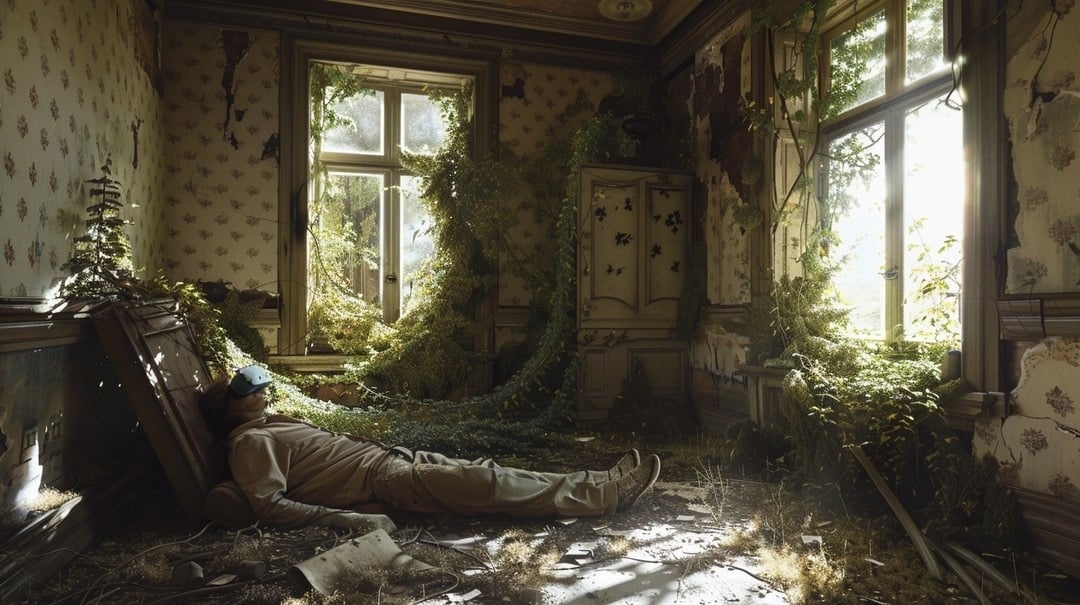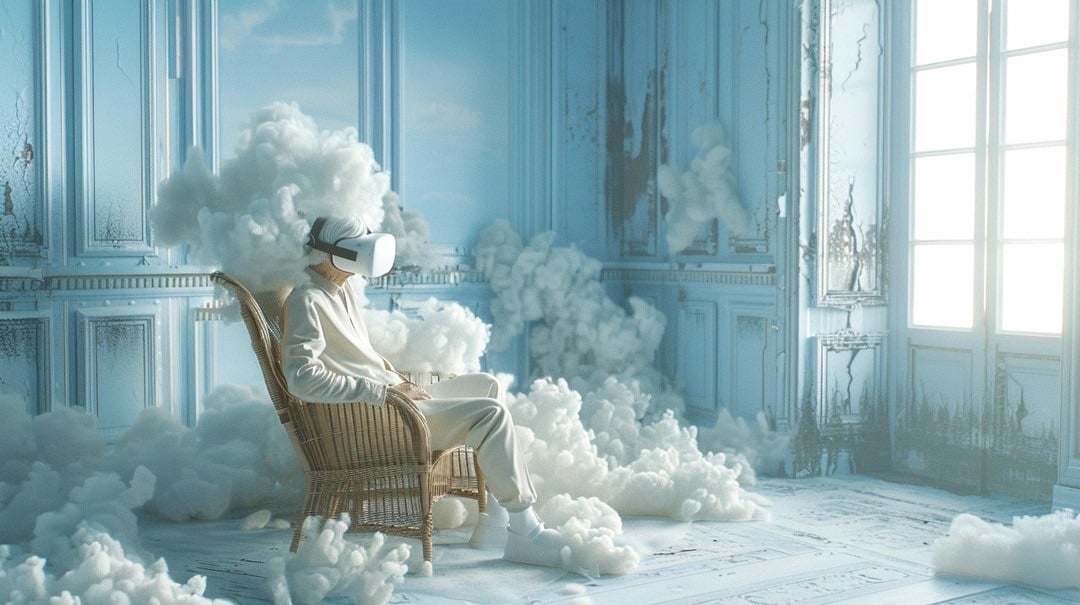AI Image Feedback Loop
Data artist Robert Hodgin recently created a feedback loop between Midjourney and ChatGPT-4 — he prompted MJ to create an image of an old man in a messy room wearing a VR headset, asked ChatGPT to describe the image, then fed that description back into MJ to generate another image, and did that 10 times. Here was the first image:

And here’s one of the last images:

Recursive art like this has a long history — see Alvin Lucier’s I Am Sitting in a Room from 1969 — but Hodgin’s project also hints at the challenges facing AI companies seeking to keep their training data free of material created by AI. Ted Chiang has encouraged us to “think of ChatGPT as a blurry jpeg of all the text on the Web”:
It retains much of the information on the Web, in the same way that a jpeg retains much of the information of a higher-resolution image, but, if you’re looking for an exact sequence of bits, you won’t find it; all you will ever get is an approximation. But, because the approximation is presented in the form of grammatical text, which ChatGPT excels at creating, it’s usually acceptable. You’re still looking at a blurry jpeg, but the blurriness occurs in a way that doesn’t make the picture as a whole look less sharp.
And we already know what you get if you recursively save JPEGs…
See also La Demoiselle d’Instagram, I Am Sitting in a Room (with a video camera), Google Image Search Recursion, and Dueling Carls.





Stay Connected